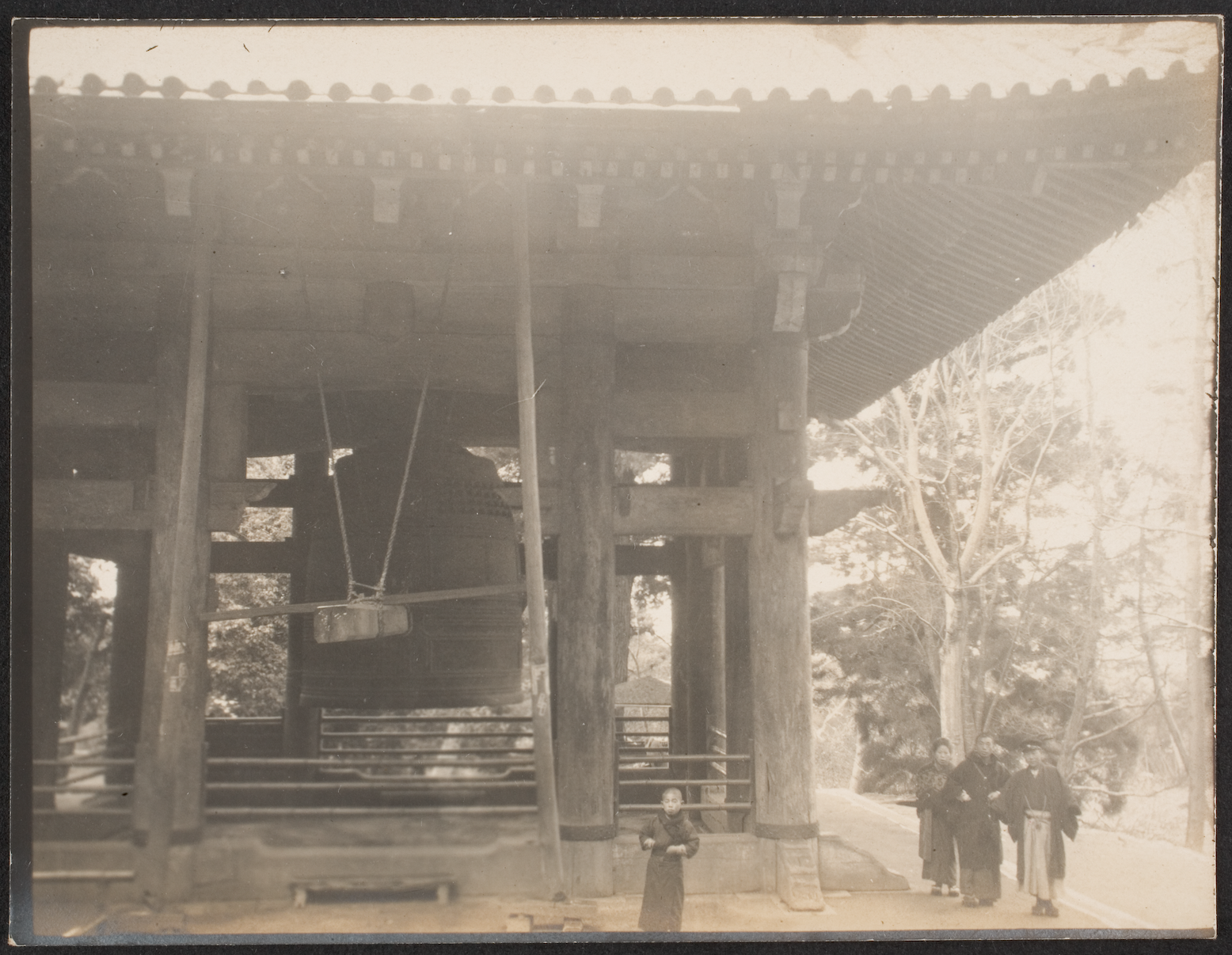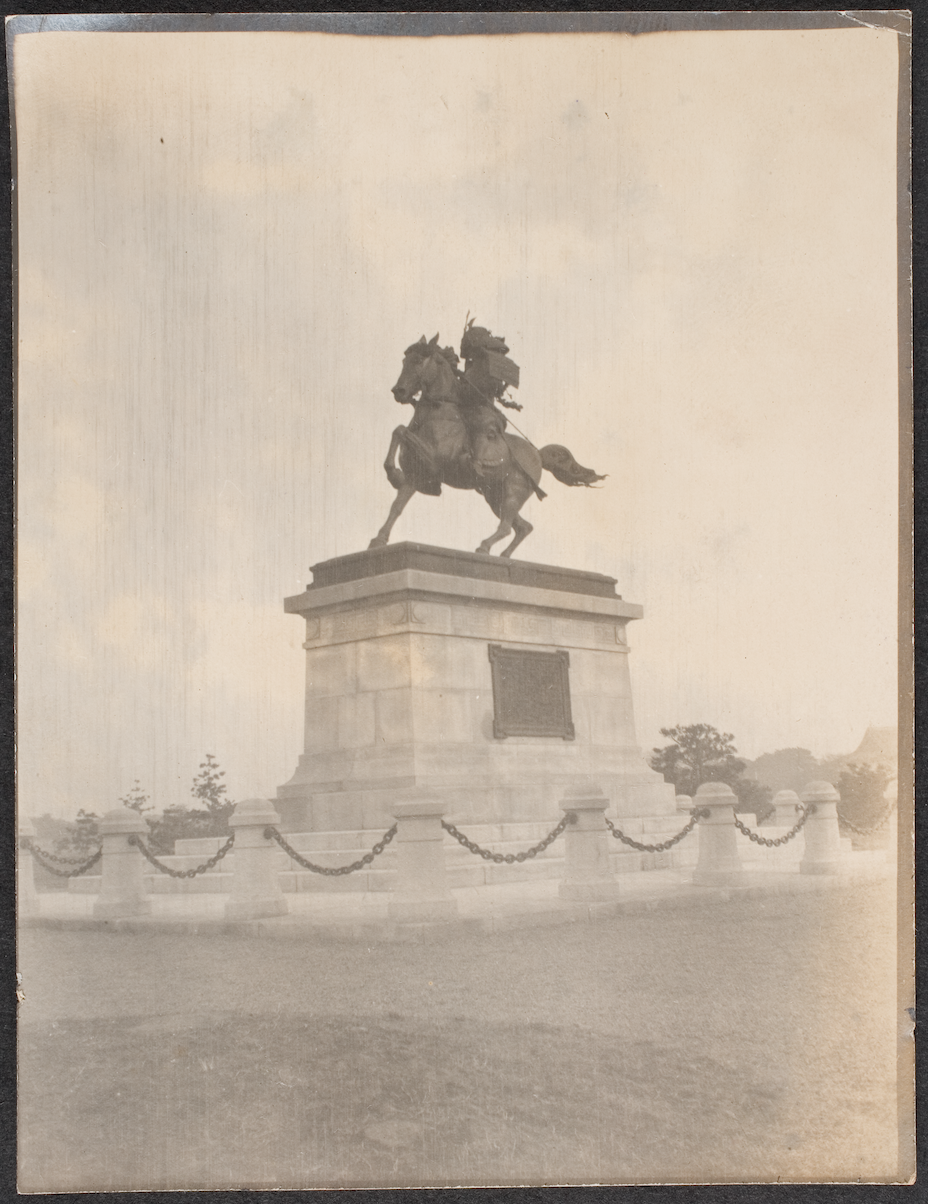The Davis Museum is closed for Wellesley College’s winter break. Please join us at our spring opening celebration on February 5, 2026, at 4 pm.
Tourist Sites in Japan

Chion-in Temple, Kyoto, Japan, detail, Travel Album: China and Japan, early 20th century, gelatin silver print, Gift of Jerome Hanauer 1989.66.214
In the late nineteenth and early twentieth centuries, tourists hired guides during their travels, much like today. These photographs allow us to follow along with the collector’s itinerary in Japan and reveal which sites they found most compelling. During this period, English-speaking tourists often relied on A Handbook for Travellers in Japan, by John Murray (1891). The thirty-seven photographs of Tokyo, Kyoto, and the Inland Sea suggest that the album’s owner may have followed itineraries from the popular guidebook, adding leisure to otherwise work-focused travels.
This is the only photograph where we see people in front of a monument in Japan. The album’s collector perhaps included them to highlight the bell’s immense size, especially the young monk in the foreground. On the right side, there is a woman and two men. This bell, cast in 1636 and known as the Great Bell, is one of the largest in Japan at nearly 11 feet high. Tourists like the album’s collector flocked to see the bell due to its massive size after reading about it in Murray’s A Handbook for Travellers in Japan. It is supported by a wood tower that was built in 1678 without the use of nails, screws, or glue. The Great Bell stands inside the Buddhist temple Chion-in, founded in 1234. Today, the bell still rings on New Year's Eve.

Statue of Kusunoki Masashige, Imperial Palace Plaza, Tokyo, Japan, detail, Travel Album: China and Japan, early 20th century, gelatin silver print, Gift of Jerome Hanauer 1989.66.99
The equestrian statue in this photograph represents Kusunoki Masahige, a famous samurai from the fourteenth century, and stands in the heart of the Imperial Palace in Tokyo. Much like the bell in the previous photograph, this image reveals which sites the album’s collector found most compelling. Masahige was a Japanese national figure revered for his loyalty to his country. A recommended stop in Murray’s A Handbook for Travellers in Japan, this bronze statue was erected in 1900, long after the samurai’s death. We thus can conclude this was taken in the first years of the twentieth century. To emphasize the statue’s size, the album’s collector chose this photograph taken from below, at a low angle.
Conclusion
Turning through the pages of this album, we encounter China and Japan through the eyes of the American photograph collector, who was perhaps traveling for business, pleasure, or both. The photographs suggest that the collector was interested in documenting various sites and monuments, as well as people living and working across China and Japan. This souvenir album was made possible thanks to two technological advances: the reduction in the size of cameras, which became less cumbersome and easier to travel with, and the invention of gelatin-silver bromide plates, which allowed for “instant” photography. Thanks to these innovative new technologies, the collector could thoroughly document their trip, allowing us to follow along decades later. Maybe one day, your travel album will also be in a museum!